Read this glowing article about my iPhone photography exhibit at The Pennsylvania State Museum, which ends February 17, 2013. My exhibit is the last to be reviewed in the article:
Your first trip to the State Museum of Pennsylvania was likely on a school field trip.
Remember wandering the halls passed the giant statue of William Penn to see the dinosaur bones and the taxidermy stuffed deer and bison? Yet housed in the State Museum are a regularly rotating series of fine art exhibits with Pennsylvania ties. Two such exhibits run through the beginning of February, which demonstrate traditional to ultra-modern directions within art today.
The Pennsylvania Watercolor Society (www.pawcs.com) displays its 33rd annual International Juried Exhibition, which has attracted more than 600 entries from the United States, Hong Kong, India and Canada. The exhibit consists of 120 pieces that exemplify the vast range within the medium. When thinking of watercolors, most people envision soft colors in pastoral landscapes or still life paintings. While there are many beautiful examples of watercolors in this vein, many more demonstrate the ability of the artists to expand beyond those horizons.
The striking photorealistic quality of Paul Sullivan’s “5th Ave. & 53rd” depicts a woman walking down a sunny urban vista, past fluttering flags. Similarly, in William McAllister’s “Vintage Django,” a true depth and contrast within a dimly lit pub scene is portrayed. But perhaps most photo-like is Sam Bailie’s “Nap,” which uses vibrant gold and orange to portray a sleeping young woman. In any of these pictures, one can almost forget that it was the artist’s eye and brush, not camera, which captured the images.
Detailed images are the focus in Vicki L. Renn’s “Living on the Edge,” using extremely controlled fine line work to illustrate an owl within a cornfield. In “Allie Kat,” Beth A. Palser gives movement to the waves lapping at a sailboat. The decayed interior stairway of Robert A. Jenkin’s “Allure” is an unforgettable example of how a painting can evoke emotions through the use of color and technique, not to mention unique presentation through matting and framing.
Watercolors are not commonly associated with abstracts, yet in Charlene Gerrish’s “Tom’s Welding Shop,” what can be viewed as a simple representation of materials within the shop becomes an a neo-cubist abstract, replete with black background highlighting bright colors, allowing one to completely forget the original subject matter. In “The Energy of Viewing Art at the MOMA,” a mixture of abstract-influenced geometric shapes coupled with the soft feathered silhouettes of museum-goers reminds one of early modernist master Charles Demuth. The PAWCS’s exhibition is an extensive collection that showcases the range and variety of works that exist within the watercolor medium. The 33rd International Juried Exhibition of the Pennsylvania Water Color Society runs until Feb. 3.
Also at the State Museum, the Susquehanna Art Museum has organized a multi-disciplinary exhibit titled “Where There is Light,” bringing together painting, sculpture and photography. Entering the space, it’s impossible not to be awed by the suspended glass sculpture of Jeremy Friedly of Through the Fire Studios. Using a combination of found objects and sculpted glass horses, “Spirit of the Wind” dazzles the viewer by its sheer size and use of light. More traditional sculpted pieces by Frieman Stoltzfus of plaster and clay are reminiscent of works by Rodin, while “The Benediction” includes elongated figures with a look similar to a Giacometti sculpture.
The undeniable highlight of “Where There is Light” is the photography, or more specifically, the iPhoneography, of Kevyn Bashore. The images throughout the exhibit are a portion of a larger project, “The 365 Day Project.” This is a commitment he made from Feb. 12, 2011 to Feb. 12, 2012 to capture images with his iPhone 4 and utilize inexpensive iPhone applications like Hipstamatic and Instagram. Bashore describes his project’s purpose “to use an unprofessional tool, which is in the hands of the masses ….to push myself and my creative boundaries, using limited means and resources, to produce interesting, provocative, inspirational and beautiful art.” Accompanying the images in the series are insightful narratives, essays and personal reflections which result in a dual “journaling” project capturing both photos and personal thoughts throughout the year. During the creation of “The 365 Day Project,” Bashore captured more than 10,000 images and employed more than 70 “apps” to manipulate and create the final 365 photos to document the year. The sheer sense of spontaneity of capturing numerous images every day is framed around the parameters of this immense undertaking to select a single image to represent each day of the year. The sense of freedom of expression is constrained by the limit of a single frame to ultimately display.
The individual photos are displayed in sizes ranging from 4” to 9’, which not only draws the viewer in to take a closer look but also makes one step back to view all the details. Photo subjects range from personal, such as homes, friends and family occasions, to purely artistic, including landscapes, portraits and still life. Distorted abstract images of recognizable subjects are manipulated to give ethereal and mystical qualities. The project does more than display professionally-produced images; more importantly, it inspires. Who hasn’t taken a cell phone photo and reflected upon its “artistic” merit? It is this sentiment exactly that Bashore expresses as he “hopes to inspire family, friends and those I meet along the way, to use whatever simple tool that is in their hands to create personal expressions of art.”
The time you spend in “The 365 Day Project” allows you to reflect upon the enormity of the project while at the same time feeling the true personal nature of the project. Bashore’s ability to capture images of everyday beauty certainly inspires the viewer to be aware of one’s surroundings and see the art in everyday life. After visiting “Where There is Light,” be sure to visit www.kevynbashore.com to view the entire series. “Where There is Light” runs at the State Museum until Feb. 17.
The State Museum of Pennsylvania is located at 300 North St., Harrisburg. Hours are Wednesday through Saturday 9-5 and Sunday 12-5. Visit www.statemuseumpa.org for more information and upcoming events.
Joseph George holds a degree in History & Art History from Dickinson College. He and his wife, Barrie Ann, have spent much of their 20 years together travelling and visiting art galleries locally and throughout the world. Their tastes range from fine art to street art.



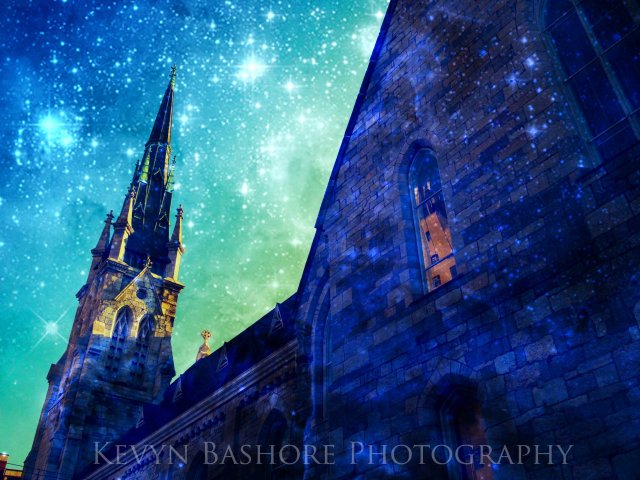
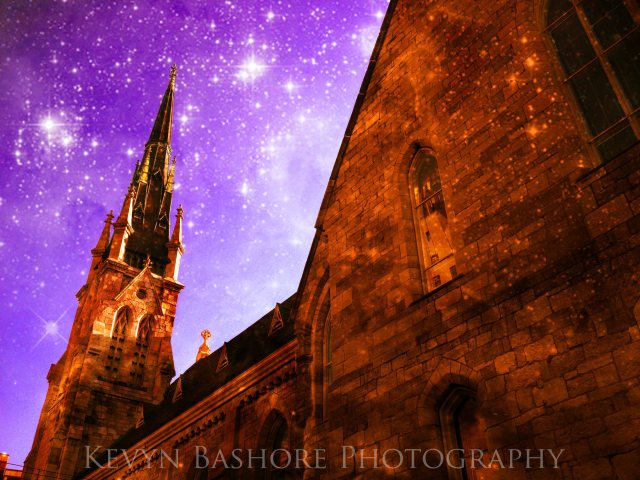


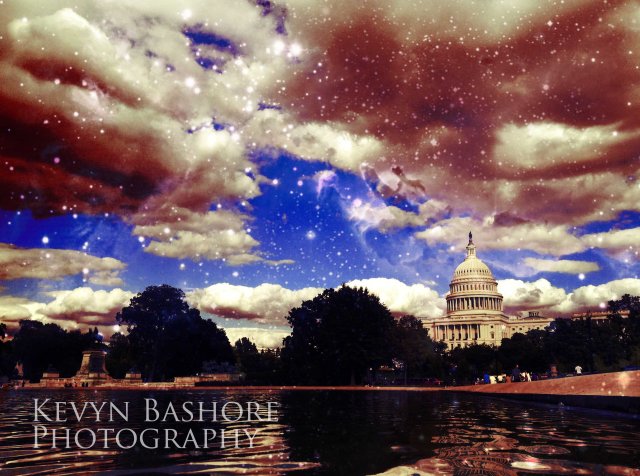





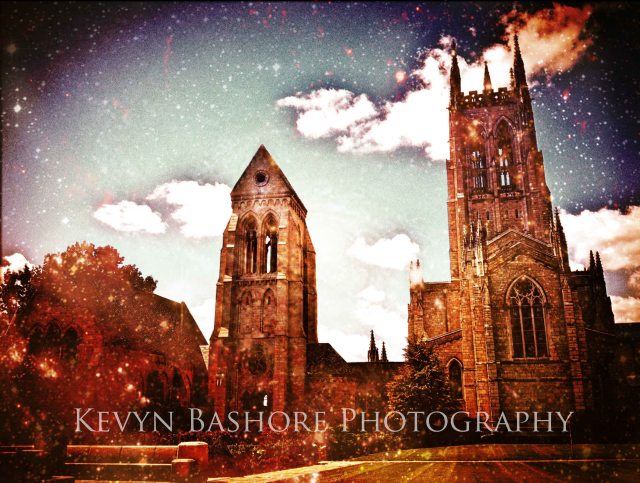
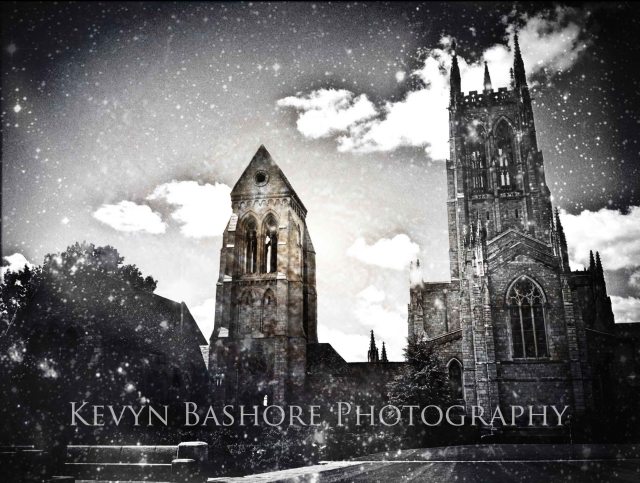

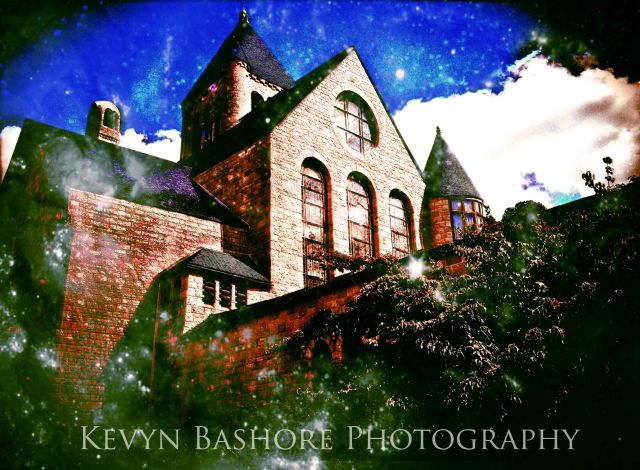

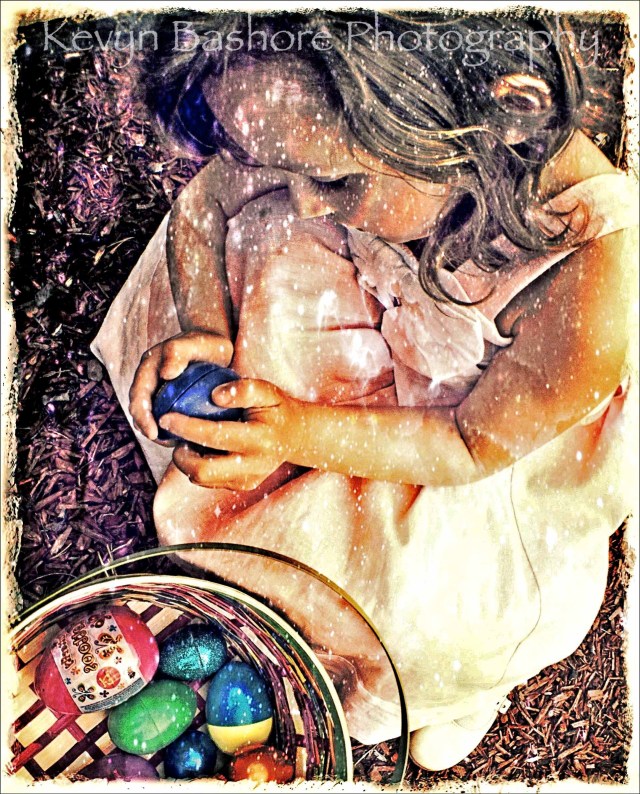
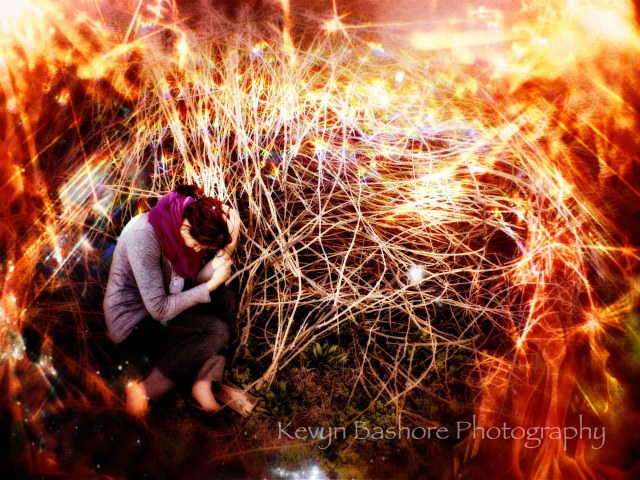





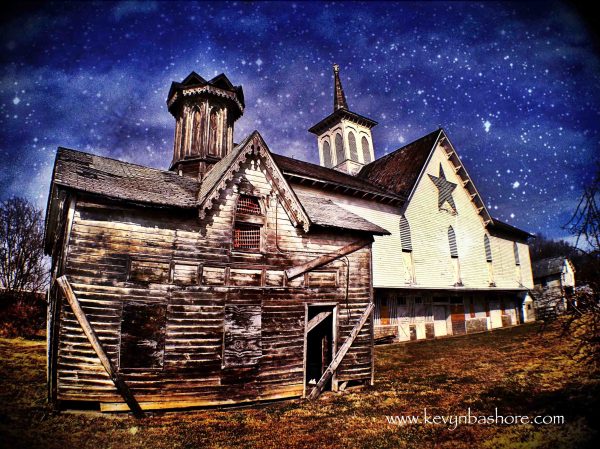


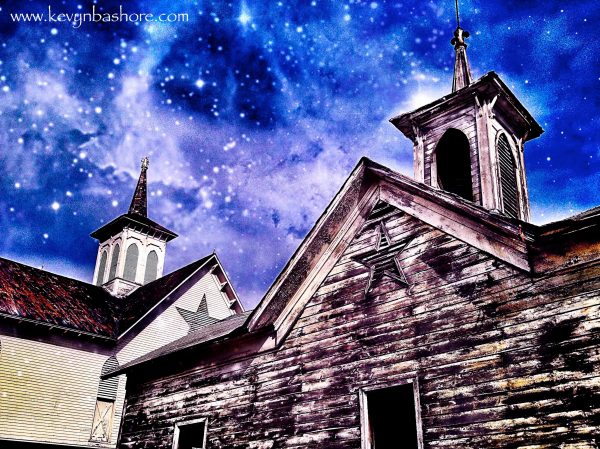

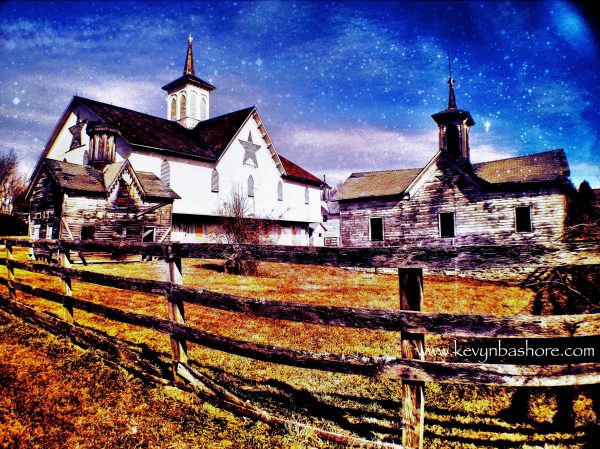







When Beauty Returns – Kevyn Bashore – iPhoneography
“When Beauty Returns”
Mt. Gretna, PA
November 11, 2012
By Kevyn Bashore
iPhoneography: iPhone 4s
I grew up in the foothills of the Blue Ridge Mountains in south central Pennsylvania where wild pheasants roamed freely and in plenty, even in our backyard. My father would take us hunting and we were always on the lookout for the cockbirds, which were the male pheasants. Just as in many bird species, the male is the most beautiful and colorful. Strangely, and almost unperceptively, sometime after 1979 the pheasants disappeared. Without notice or explanation. My father believed they were killed by pesticides. Others believed the hunters killed them off, like the buffalo. But I always had a suspicion that it was due to TMI, Three Mile Island.
We grew up about five miles, as the crow flies, from the infamous nuclear power plant. And it’s easy to see from any hill around my parents’ home. That tragic accident was about 33 years ago. And I learned later that it would take approximately 25 years for the land surrounding the plant to become normalized and inhabitable had there truly been a meltdown. Many believe we were never told the truth about the incident and that it was much worse than was reported. But all I remember is that my father decided to stay put, against evacuation recommendations, in order to be available for his job. And for some reason that meant our entire family stayed behind. My father was a dedicated and loyal elevator mechanic and he wanted to stay near the capitol city in case any elevators broke down. It was a noble act, in many ways, but not wise when considering a father’s first responsibility is to protect his family. But we stayed behind, much to my surprise and anguish. I thought we’d take a spontaneous family vacation or be invited to go to a mountain cabin with friends or relatives, but no invitation was extended. I guess no one considered that we would stay behind.
That night I remember huddling inside our home and looking out the windows. It was Wednesday, March 28, 1979. The fog was thick. And as it swirled around the only street light on our country road, I remember wondering why the darkness looked so green, like the haunting pea-soup fog of British literature. But I was comforted to know we’d be protected inside our home. That is, until I turned on the news and heard them say that radiation is not stopped by walls. I was an ignorant 11th grader. And I cowered in my bed all night imagining invisible death seeping through our walls.
Years later, I wondered where the pheasants went. And the beautiful songbirds. Around eight years ago, I noticed colorful birds returning to the feeders outside my parents’ home. Oddly, is was almost 25 years from the date of the TMI incident. But I still never saw any pheasants. That is, until last month. I was driving through the country from Mt. Gretna where I run barefoot on mountains and suddenly spotted my first pheasant in almost 33 years. I was gobsmacked and swerved off the road, backed up, jumped out of the car, and stepped through the high weeds, carefully avoiding the poison ivy. The bird was nowhere to be found. Then suddenly, he sprang from his hiding, just as when I was boy hunting in the high weeds with my father, and lurched through the air to safety in a nearby field. I was ecstatic to have spotted it. But wondered why it was the only one I’d seen for decades.
Yesterday, as I drove that same route, only in the opposite direction, I recalled the pheasant incident and wondered, per chance, if I would see the pheasant again. How crazy would that be? And within ten seconds as I pulled up to a stop sign, to my right, parked along the road, was a hunter standing at the back of his car with a dead pheasant lying on his trunk. I was stunned. Could this be the same pheasant? What are the chances of seeing two pheasants at the same spot, weeks apart, after seeing none for 33 years? Strange. Although I was running late to see a musical performance, I couldn’t refrain myself from turning around and pulling up next to the hunter. I cranked down my window and asked if I could shoot a photo of his bird. He obliged. But didn’t agree to allow me to shoot him next to it. So I asked him about the pheasant population and he told me that the Game Commission releases 15,000 pheasants each year for hunters and that this pheasant was his fifth or sixth kill this season. He was jubilant. I was sad. Although he said he eats the birds, he also stuffs them for trophies.
I grew up surrounded by hunters, but I couldn’t bare to see animals suffer and die. I was an enigma to my poor father who grew up as a farm boy surrounded by birth and death. He was a man’s man. And a passionate hunter. He’d vigorously slit through the skin and flesh of rabbits, pheasants, and deer, and strip the skin off the meat and muscle. And expected me to do the same. It was a ghastly site to me. Yet I was a remarkable marksman. I had a steady hand and intuitive eye when shooting targets and clay birds. I just didn’t like to kill animals. In fact, when my father took my sisters and me deer hunting, he would station us all around the mountain and check on us every so often during the cold and frigid days. I was always so bored. But one day I built a small fortress covered in leaves, to hide me from the deer we came to shoot. And as I sat there daydreaming, for who knows how long, I suddenly noticed a herd of deer standing in front of me, oblivious to my presence. My first reaction was to aim and shoot, because that’s what we were there for. But I was instantly faced with the only flaw in my deer blind: I forgot to keep my gun in a position where I could quietly aim without disturbing the logs, twigs, and leaves, and hence scaring off the deer before I could aim and pull the trigger. Exasperated by my brilliant failure, I relented and turned my energy toward watching the herd slowly pass by. I had successfully masked my presence and scent, which was the mark of an experienced hunter, and could observe the beauty of the deer in their natural setting. It was exhilarating. A sacred moment. Between one who had the power to take life, but gave it back as a sacrament to the sanctity of life and beauty.
And so, as I stood there shooting photos of the lifeless pheasant yesterday, I contemplated the irony of the unexplained disappearance of the pheasants from our wilderness, and the purposeful breeding and stocking of them in the forest for hunters to shoot for pleasure, food, and stuffing for wall trophies. We are the only known creatures in the universe who can both eat our food for enjoyment or nourishment and preserve it as museum pieces.
Today’s writing took an expected turn, as writing always does. Until we put pen to paper, or fingers to a keyboard, we never actually seize the thoughts that are stirring in our mind and soul. Writing is like unleashing a flood torrent and riding the wave as it alters the course of the expected route home. And although my memories today seem bleak, and my photo is reminiscent of a somber Andrew Wyeth painting, my intention is to be thankful for nature, animals, and birds. I don’t know where I’d be if I didn’t have the natural world to enjoy, to breathe in, to be inspired by. Not all thankfulness is explosively jubilant. Thankfulness comes in different forms, some ecstatic and some quiet. Today I’m expressing a contemplative and quiet thankfulness. And a gratefulness that after a tragedy like TMI, nature and beauty eventually return. And so it is with our lives. Whatever trauma or loss we experience, new life can eventually return. And hope bridges that gap between loss and eventual renewal. May hope and renewal arise and come quickly for us all.